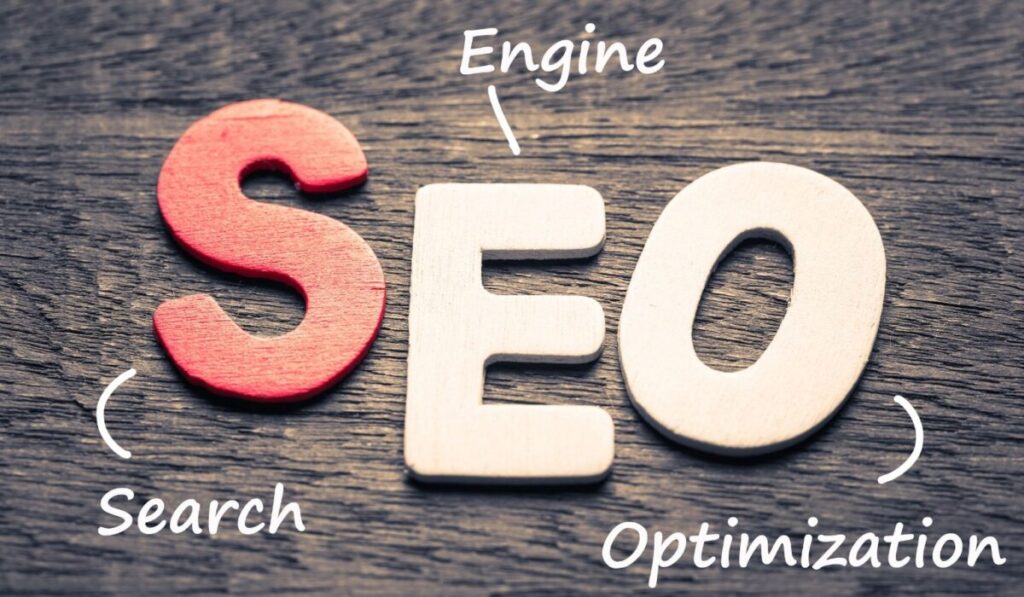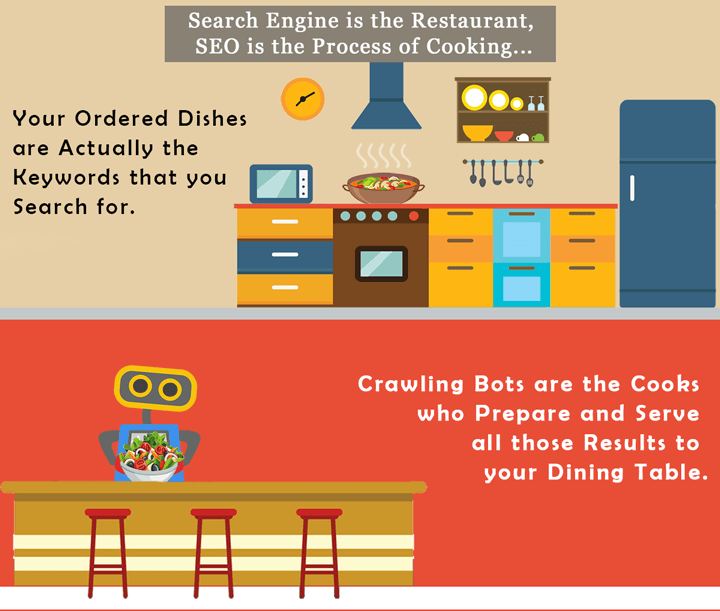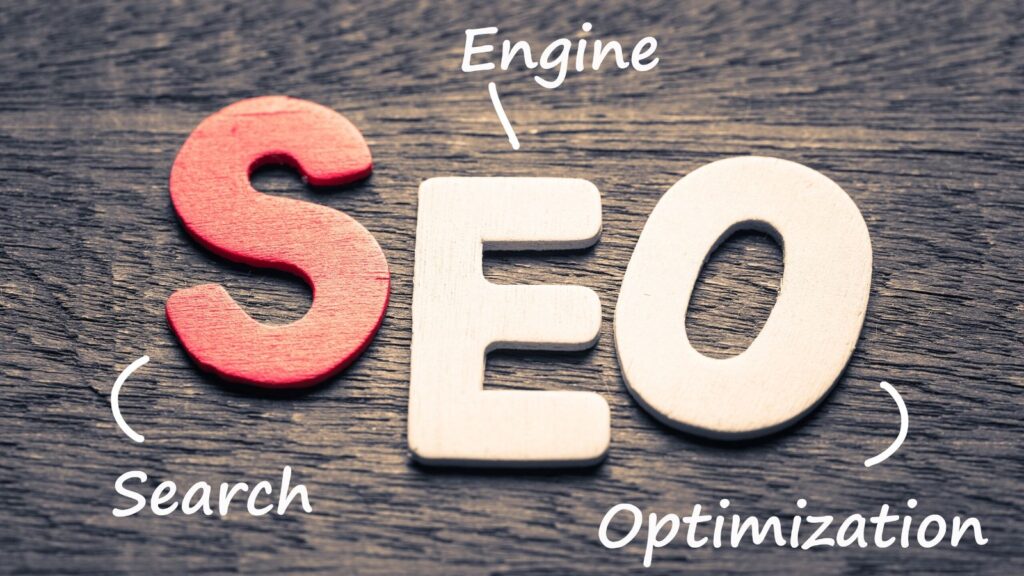Let us admit:
While every one of us internet users enjoys the fruit of SEO daily, hardly 2 or 3 out of 10 such users might be aware of what SEO stands for and why it is important in our daily lives.
Well: Let us make it simple.
Suppose today is the day you want to treat your family to a good dinner since you are done with all the good or bad restaurants you’ve tried so far. You want to try some new place with a new culture and cuisine.
So what do you do?
Yes: You go to the big G: Google and search keywords like “Chinese restaurant,” Google treats your eyes with a map of your vicinity and the names of the restaurants (local businesses) with reviews, addresses and contact details, etc. This is one example of “what is SEO.”
However, this is not enough. This defines a small part of a big SEO puzzle called Local SEO. But SEO is not just local, and it is global.
For example:
Consider yourself a student who is looking for a lucrative full bright scholarship; the keyword that you use to find a scholarship shall look like this “Fulbright scholarship SUBJECT 2023,” and Google will line up several universities offering scholarships and websites that provide a great deal of information or help about the scholarship.
This helps you get from Google basically “why SEO is important.”
You want to import salt lamps or want to export software or you want to buy something online. Let’s say you want to find a forum for a line of work relevant to you for everything you want to see over Google. SEO works like a genie that brings up the most relevant results.
Let us try to understand what SEO is after all:
Structure:
1. What does SEO stand for?
SEO stands for Search Engine Optimization.
It is a two-fold thing. For owners of websites and blogs, it brings free of cost and organic traffic straight from Google (or Bing, etc.) Search Engine Results Pages (SERP).
And:
For those who google for everything, every result you see after entering a keyword in the Google search engine comes to the surface because someone did a little or more SEO for that web page.
Search Engine Optimization (SEO) is a set of tried and tested tactics and techniques every SEO expert tries while working on their website.
In this brief guide, we will briefly discuss both on-site and off-site search engine optimization. However, before we get into detail, let us set some essential points that define the meaning of SEO.
- SEO helps bring web pages to better and higher ranks in search results.
- It is done on-site by toying with the site’s content, tags, structure, etc.
- It is also done off-site by spreading the word about the website and fetching some link juice from high-authority websites.
- SEO brings traffic to the website, and over time, it increases the quality of traffic (organic) and the quantity of traffic (number of users).
2. How SEO Works?
Alright:
Let us start again with the example of a restaurant.
You go to a restaurant and order one or two certain dishes.
After some time, they’re served to you.
Google (or other search engines) and SEO work the same way. Search Engine is the restaurant where you go, and your ordered dishes are the keywords you entered in Google search. Well, guess what? Search engine optimization is the entire process of cooking that you cannot see.
You enter keywords, get your results in 0.40 (less or more) seconds and then open a link and do what you want to do.
SEO brings all those results from the unseen kitchen to your dining table. Google and other search engines have crawling bots that sneak into all the websites to find out what the website is about, and once a specific web page gets crawled. These crawlers bring it to a query related to that page.
So, where does SEO stand in all this?
SEO dictates whether your page will appear in the top ten search results or the graveyard of pages 3, 4, or beyond.
SEO has to account for many factors to please Google or other search engine algorithms. For example, suppose your SEO technique overlooked the importance of responsive web design or Brian Dean’s 200 ranking factors. In that case, the Google algorithm will punish the web page by not ranking it well.
3. How to do SEO?
Well:
I am sorry to disappoint you. There is no definitive guide on how to do so.
Top ranking on a search engine result page is like mountaineering.
There is no road to the summit, and every trekker has to find their way.
Had Google or Bing explained how to please their algorithms in a certain way and rank at the top? All websites would have ranked for page 1, but this is impossible.
Here’s the deal:
People who know Google’s algorithm. People who know SEO and have been working with SEO giants like Neil Patel and Mathew Woodward know how to rank a website.
But they cannot tell how long it will take.
Some would rank their websites by on-site SEO, paying ordinary attention to off-site SEO.
Then some ace the art of back-linking and only do on-site just as much as needed for the job.
Let us try to understand both strategies. However, before understanding the below techniques. Make sure you truly understand what the meaning of SEO is and why you need it for the marketing of your business:
A. On-site SEO
Alright:
There are two main pillars of search engine optimization: on-site and off-site. Let us first understand the meaning and function of on-site SEO.
As the term suggests.
It is the type of SEO associated with the actions you take on your website, in simple terms.
It means improving and devising the best website structure, content strategy and style, keyword research and application optimization, tags and metadata, page load speed, and responsive design.
Let us briefly discuss all of them:
- Content & Keywords – From a content strategy that encompasses everything from content topics to style to keywords strategy, the most significant chunk of on-site SEO is content and keywords. There are multiple keyword tools that professionals use to perform keyword research.
- Tags – Talk about H1, H2, or H3 tags or canonical tags. They either define the status of a heading in HTML language or establish the ownership of content.
- Page Metadata – This mixture of keywords and phrases defines your page for the target audience. Correct use of metadata helps the visitors skim and scan a page and tell the search engines that your page is associated with a specific string of keywords or topics.
- Speed and Design – It is now confirmed that Google considers page speed as a ranking factor. Google’s approach is dictated by one simple principle – the user’s ease and convenience. This is why Google considered page speed a good omen, and now for mobile search as well, page speed is a significant factor (Google Speed Update: Page speed as a mobile ranking factor).
I am speaking of mobile.
Let us talk about mobile-friendly and responsive design. It is one of the basic principles of on-site SEO. Suppose your website is not optimized for mobile phones and tab screens. It’s a bad omen because it goes against a few basic on-site search engine optimization practices.
B. Off-site SEO
That’s it:
Enough about on-site SEO; this is only one side of the coin; let us now talk about the other side.
Off-site SEO:
Well, you make every effort to rank your page outside your website.
Take your website as your campaign office.
When you are off the office and going door to door asking for support (in SEO language, asking for backlinks). That is called off-site SEO.
Here is a minor detail of the actions that one takes in off-site SEO campaigns:
- Backlinks – Tell you what when someone says off-site SEO 90 out of 100 times. They mean a struggle to get do-follow backlinks. What is a backlink? It is the hyperlink to your webpage mentioned on other web pages. It becomes a do-follow backlink when the pages referencing your web page let Google and other crawlers follow the link and land on your web page. Unless a web page owner specifically turns the hyperlink into a no-follow, it remains a do-follow link. Backlinks are fantastic because they bring the link juice to your web page. In SEO terminology, link juice is the quality of hyperlinks to your web page. All the hyperlinks that come from other web pages form the link juice.
- Other than Backlinks – Actions other than backlinks are also an essential part of off-site SEO strategy. What are these actions? Well, if you market your website on social media and bring a lot of social signals, that is off-site SEO. This is termed off-site SEO if you get traffic via guest blogging, blog commenting, brand mentions, and influencer marketing.
So:
Pals, trying to summarize what SEO stands for in a blog post as small as this can only help at the novice level. For more in-depth SEO guides on each aspect of SEO, stay connected, and keep asking!





